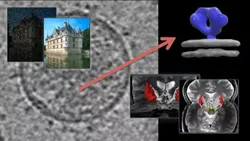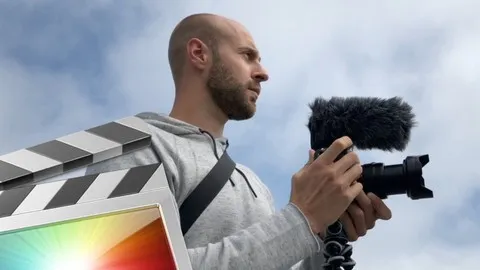
Image and Video Processing: From Mars to Hollywood with a Stop at the Hospital 
This course explores the fundamentals of image and video processing, from applications in space exploration to medical imaging to Hollywood special effects. Students will gain an understanding of the underlying principles and techniques used in these fields. ▼
ADVERTISEMENT
Course Feature
![]() Cost:
Cost:
Free
![]() Provider:
Provider:
Coursera
![]() Certificate:
Certificate:
No Information
![]() Language:
Language:
English
![]() Start Date:
Start Date:
Self Paced
Course Overview
❗The content presented here is sourced directly from Coursera platform. For comprehensive course details, including enrollment information, simply click on the 'Go to class' link on our website.
Updated in [March 01st, 2023]
This course, Image and Video Processing: From Mars to Hollywood with a Stop at the Hospital, provides an overview of the science behind digital images and video. Students will learn about the engineering, mathematics, and computer science that make digital images work, as well as the algorithms used for adjusting images. Additionally, students will explore JPEG and MPEG standards for encoding and compressing video images, and learn about image segmentation, noise removal and filtering. Finally, the course will cover image processing techniques used in medicine. By the end of the course, students will have a comprehensive understanding of the digital imaging world.
[Applications]
Upon completion of this course, students will have a better understanding of the science behind digital images and video, and will be able to apply this knowledge to a variety of applications. Students will be able to use the algorithms and techniques learned in the course to adjust, compress, and segment digital images and video. They will also be able to apply the knowledge gained to medical imaging, digital special effects, and space exploration.
[Career Paths]
1. Image Processing Engineer: Image processing engineers are responsible for developing and implementing algorithms and software for processing digital images. They work with a variety of technologies, including computer vision, machine learning, and artificial intelligence, to create systems that can analyze and interpret images. They also develop algorithms for image compression, image segmentation, and noise removal. As the demand for image processing increases, the need for image processing engineers is expected to grow.
2. Video Processing Engineer: Video processing engineers are responsible for developing and implementing algorithms and software for processing digital video. They work with a variety of technologies, including computer vision, machine learning, and artificial intelligence, to create systems that can analyze and interpret video. They also develop algorithms for video compression, video segmentation, and noise removal. As the demand for video processing increases, the need for video processing engineers is expected to grow.
3. Computer Vision Scientist: Computer vision scientists are responsible for developing and implementing algorithms and software for analyzing and interpreting digital images and video. They work with a variety of technologies, including machine learning, artificial intelligence, and computer vision, to create systems that can recognize objects, detect patterns, and interpret images. As the demand for computer vision increases, the need for computer vision scientists is expected to grow.
4. Medical Image Processing Engineer: Medical image processing engineers are responsible for developing and implementing algorithms and software for processing medical images. They work with a variety of technologies, including computer vision, machine learning, and artificial intelligence, to create systems that can analyze and interpret medical images. They also develop algorithms for image compression, image segmentation, and noise removal. As the demand for medical image processing increases, the need for medical image processing engineers is expected to grow.
[Education Paths]
Recommended Degree Paths:
1. Computer Science: Computer Science is a field of study that focuses on the design, development, and analysis of computer systems and software. It is a rapidly growing field, with new technologies and applications being developed every day. In this degree path, students will learn the fundamentals of computer science, including programming languages, algorithms, data structures, and software engineering. They will also learn about the latest trends in computer science, such as artificial intelligence, machine learning, and robotics.
2. Electrical Engineering: Electrical Engineering is a field of study that focuses on the design, development, and analysis of electrical systems and components. It is a rapidly growing field, with new technologies and applications being developed every day. In this degree path, students will learn the fundamentals of electrical engineering, including circuit design, signal processing, and power systems. They will also learn about the latest trends in electrical engineering, such as renewable energy, smart grids, and autonomous vehicles.
3. Mathematics: Mathematics is a field of study that focuses on the study of numbers, equations, and shapes. It is a rapidly growing field, with new theories and applications being developed every day. In this degree path, students will learn the fundamentals of mathematics, including calculus, linear algebra, and probability. They will also learn about the latest trends in mathematics, such as machine learning, data science, and cryptography.
4. Digital Media: Digital Media is a field of study that focuses on the design, development, and analysis of digital media. It is a rapidly growing field, with new technologies and applications being developed every day. In this degree path, students will learn the fundamentals of digital media, including web design, animation, and video production. They will also learn about the latest trends in digital media, such as virtual reality, augmented reality, and 3D printing.
Course Provider

Provider Coursera's Stats at AZClass
Image and Video Processing: From Mars to Hollywood with a Stop at the Hospital explores the fundamentals of image and video processing, from space exploration applications to medical imaging to Hollywood special effects. In this course you will learn the science behind how digital images and videos are made, altered, stored and used. We'll look at the vast world of digital imaging, from how computers and digital cameras form images, to how digital special effects are used in Hollywood movies, to how Mars rovers send pictures across millions of miles of space. This course begins by examining how the human visual system works and then teaches you the engineering, mathematics and computer science of how to make digital images work.
Discussion and Reviews
0.0 (Based on 0 reviews)
Explore Similar Online Courses

More Data Mining with Weka

Biohacking Your Brains Health

Python for Informatics: Exploring Information

Social Network Analysis

Introduction to Systematic Review and Meta-Analysis

The Analytics Edge

DCO042 - Python For Informatics

Causal Diagrams: Draw Your Assumptions Before Your Conclusions

Whole genome sequencing of bacterial genomes - tools and applications

Learn Final Cut Pro X Course Beginner To Intermediate

How to VLOG: Complete Beginner& Course


Start your review of Image and Video Processing: From Mars to Hollywood with a Stop at the Hospital